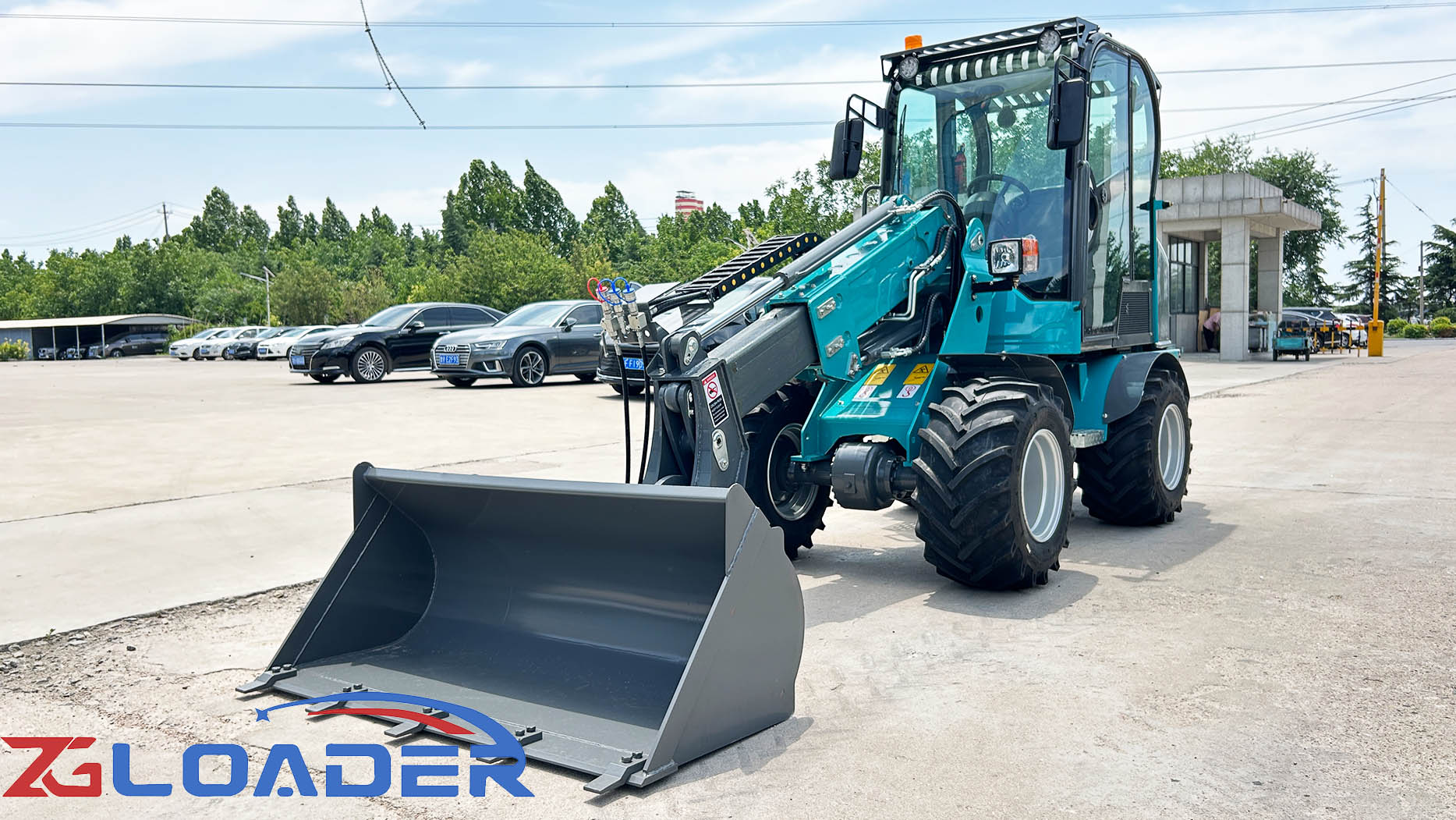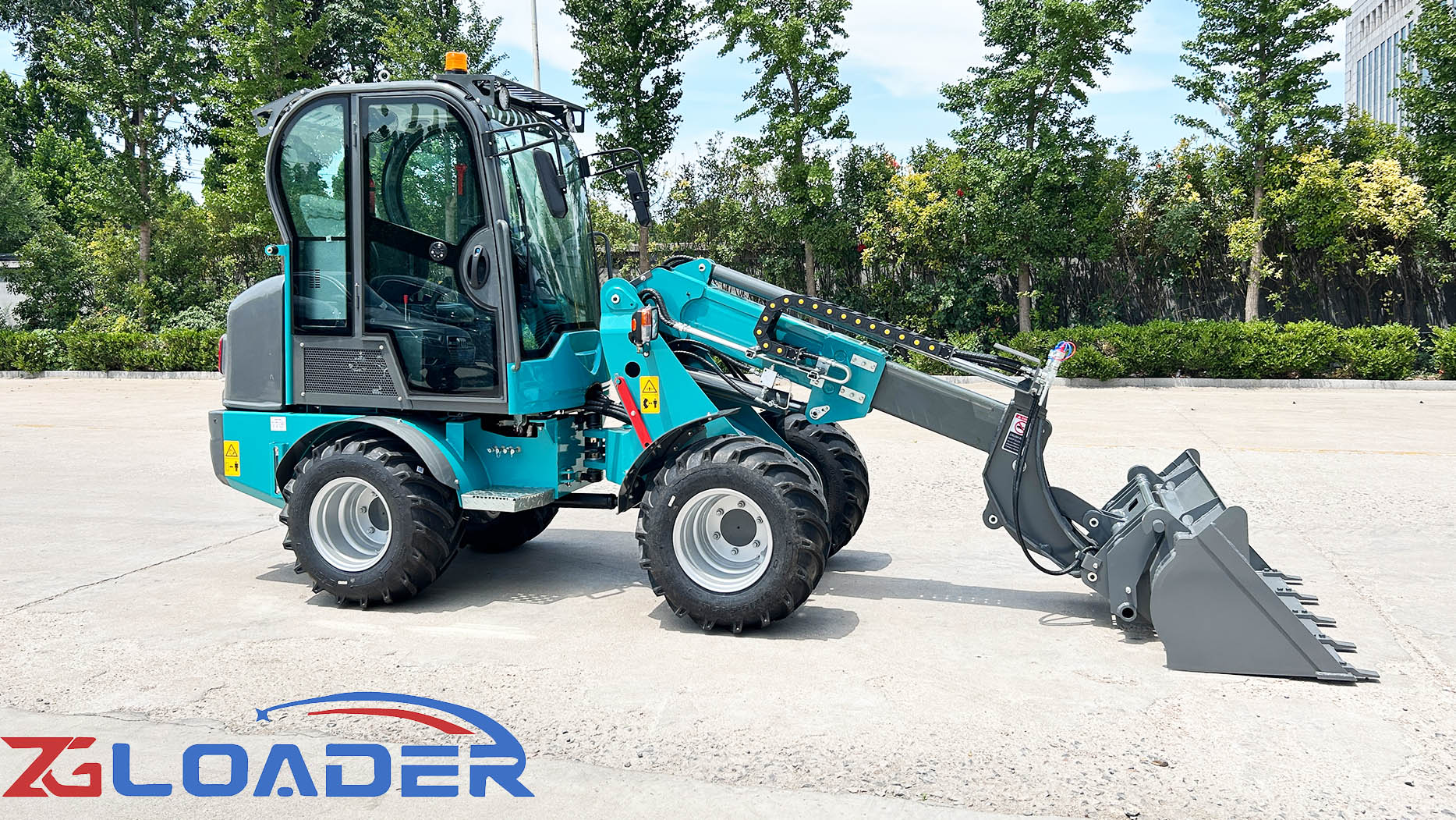Factors Driving the Price of a New Wheel Loader
Several key elements contribute to the final price of a new wheel loader. Buyers must consider these aspects to ensure they select a machine that meets their operational needs without overspending.
1. Size and Capacity: The most significant determinant of a wheel loader's price is its size and bucket capacity. Wheel loaders are typically categorized into:
- Compact Wheel Loaders: These smaller machines, often with less than 80 horsepower and operating weights under 1 ton, are ideal for landscaping, light construction, and agricultural tasks. Their prices can start from around $10,000 to $70,000, particularly for less renowned or entry-level brands.
- Small to Medium Wheel Loaders: Ranging from 80 to 250 horsepower and with operating weights from a few tons to about 20 tons, these are the most common types found on general construction sites. Their prices typically fall between $100,000 and $300,000. For example, a 2025 John Deere 644 G, a medium-sized model, might be listed around $292,479. Similarly, a Caterpillar 950M or Volvo L90H could be in this range.
- Large Wheel Loaders: These machines are built for heavy-duty applications like mining, quarrying, and large infrastructure projects. With horsepower exceeding 250 HP and operating weights of 20 tons or more, their prices can easily climb from $300,000 to over $1,000,000. A Caterpillar 982M or Komatsu WA470 would fall into this high-end category.
2. Brand and Manufacturer: Just like with automobiles, the brand of a wheel loader plays a significant role in its price. Established global brands known for their reliability, durability, and extensive after-sales support typically command higher prices.
Premium Brands: Caterpillar, Komatsu, John Deere, Volvo Construction Equipment, Case, and Liebherr are considered top-tier manufacturers. Their machines often feature cutting-edge technology, superior build quality, and a vast network for parts and service, which justifies their higher price points. For instance, a new Caterpillar or Volvo medium-sized wheel loader will generally be more expensive than a comparable model from a less premium brand.
Mid-Range and Chinese Brands: Brands like MYZG SANY, XCMG, LiuGong, and SDLG offer more competitive pricing, often providing excellent value for money. While sometimes perceived as entry-level, many of these brands have significantly improved their quality and technology over the years, making them popular choices for budget-conscious buyers. For example, a new 5-ton XCMG ZL50GN might be priced between $40,000 to $55,000, representing a substantial saving compared to Western equivalents.

3. Features and Technology: Modern wheel loaders come equipped with a wide array of features and technological advancements that enhance performance, efficiency, safety, and operator comfort. These additions significantly impact the price:
- Engine Technology: Engines meeting higher emission standards (e.g., Tier 4 Final/Stage V) are more expensive due to advanced exhaust after-treatment systems.
- Hydraulics: Advanced hydraulic systems, including high-flow auxiliary hydraulics for specialized attachments, add to the cost.
- Transmission: Different transmission types (e.g., hydrostatic, powershift, continuously variable transmission) can influence efficiency and price.
- Operator Comfort: Features like climate-controlled cabs, air-ride seats, advanced infotainment systems, and joystick controls contribute to a higher price.
- Safety Features: Rear-view cameras, 360-degree vision systems, obstacle detection, and advanced lighting packages are crucial for safety but increase cost.
- Smart Technology: Integrated payload management systems, telematics for remote monitoring, GPS guidance, and automation features provide significant operational benefits but come at a premium. These technologies can optimize loading cycles, track fuel consumption, and facilitate preventive maintenance.
4. Attachments: The basic price of a wheel loader usually includes a standard bucket. However, many applications require specialized attachments, which are sold separately and can significantly add to the overall investment. Common attachments include:
- Grapples (for logs or waste)
- Forks (for palletized goods)
- Snow plows or blowers
- Brooms
- Coupler systems for quick attachment changes
5. Dealer and After-Sales Support: The reputation and services offered by the dealer can also influence the price. A dealer providing comprehensive warranties, readily available spare parts, highly skilled service technicians, and strong customer support might have slightly higher initial prices, but these can translate into lower total cost of ownership over the machine's lifespan due to reduced downtime and efficient maintenance.
6. Market Conditions and Location: Global and regional economic conditions, supply chain dynamics, and specific market demand can cause fluctuations in prices. Import duties, taxes, and shipping costs (especially for a country like Singapore that relies heavily on imports) will also affect the final purchase price in different regions. In Singapore, for instance, the overall construction equipment market is expected to grow, which might influence pricing dynamics.

Estimating an Average Price Range
Given the complexities, providing a single "average price" for a new wheel loader is challenging. However, we can categorize it based on common applications:
- For small-scale projects, landscaping, or light farm work, a new compact wheel loader from a reputable brand (or a mid-range Chinese brand for slightly larger capacity) could cost between $30,000 to $100,000.
- For general construction, infrastructure development, and medium-sized industrial operations, a new medium wheel loader from a well-known international brand will typically range from $150,000 to $350,000. This is arguably the most common segment where businesses seek new equipment.
- For large-scale mining, quarrying, or significant earthmoving projects, a new large wheel loader could cost anywhere from $400,000 to over $1,000,000.
It's important for potential buyers to get detailed quotes from multiple dealers, specifying the exact model, features, and attachments required for their specific needs.

Beyond the Purchase Price: Total Cost of Ownership
While the initial purchase price is a major consideration, savvy buyers also focus on the Total Cost of Ownership (TCO). This includes:
- Fuel Efficiency: A more fuel-efficient engine, even with a higher initial price, can lead to significant savings over the machine's lifetime.
- Maintenance Costs: The cost of routine maintenance, spare parts, and labor for repairs. Brands with easily accessible and affordable parts can offer long-term savings.
- Downtime: The cost incurred when the machine is out of operation due to breakdowns or maintenance. Reliable machines with good dealer support minimize downtime.
- Resale Value: Premium brands tend to hold their value better, offering a higher return on investment when the time comes to upgrade or sell.
In conclusion, the average price of a new wheel loader is a dynamic figure, heavily influenced by its size, capabilities, brand, technological features, and market conditions. While a compact model might be acquired for tens of thousands, a large mining-grade machine can demand over a million. Businesses must carefully assess their specific operational requirements and budget, looking beyond the sticker price to consider the long-term total cost of ownership, to make an informed and strategic investment in this vital piece of heavy equipment.
Post time:Jun.17.2025
